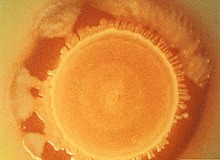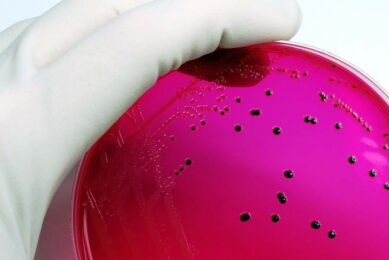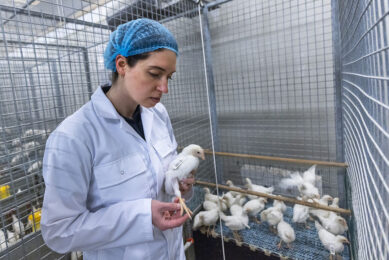Genetic screening technique detects antimicrobial-resistance genes

Using an advanced genetic screening technique, ARS has detected over 700 genes that give microbes like Salmonella and E. coli the ability to resist antibiotics and other antimicrobial compounds.
The researchers used what is called DNA microarray technology to find the resistance genes in a wide variety of bacteria such as Salmonella, E. coli, Campylobacter, Listeria, and Enterococcus, among others. These organisms can cause food poisoning and are thus a major public health concern.
Researchers are concerned that some of these organisms have acquired genetic resistance to the antibiotics used to kill them. Finding the genes that confer resistance is an important step for scientists looking for new ways to control these organisms.
All genes identified in organisms are logged into GenBank, a gene database administered by the National Center for Biotechnology Information at the National Institutes of Health. Agricultural Research Service (ARS) microbiologists at the agency’s Bacterial Epidemiology and Antimicrobial Resistance Research Unit in Athens, Ga., along with collaborators at the Sidney Kimmel Cancer Center in San Diego, Calif., searched through GenBank for genes annotated by other scientists to likely encode resistance.
The team selected about 1,000 unique genes from among 5,000 genes found in GenBank that included the words “antimicrobial resistance” in their description. Then they designed a microarray of more than 700 DNA probes to detect the resistance genes.
A DNA microarray is a small glass slide used to test genetic samples for the presence of specific genes. To make the arrays, pieces of DNA called probes are designed to detect the genes that are known to confer antimicrobial resistance. These probes are then fused onto the glass slides in specific configurations.
To use the array, DNA extracted from the bacterium to be tested is tagged with fluorescent dyes and then put into contact with the slide containing the probes. The antimicrobial-resistance genes in the bacteria will then attach themselves to the probes they match on the slide, making the specific probe for that gene fluoresce and thus identifying the antimicrobial resistance gene that was in the bacterium.
This work was published in the scientific journal Microbial Drug Resistance.













